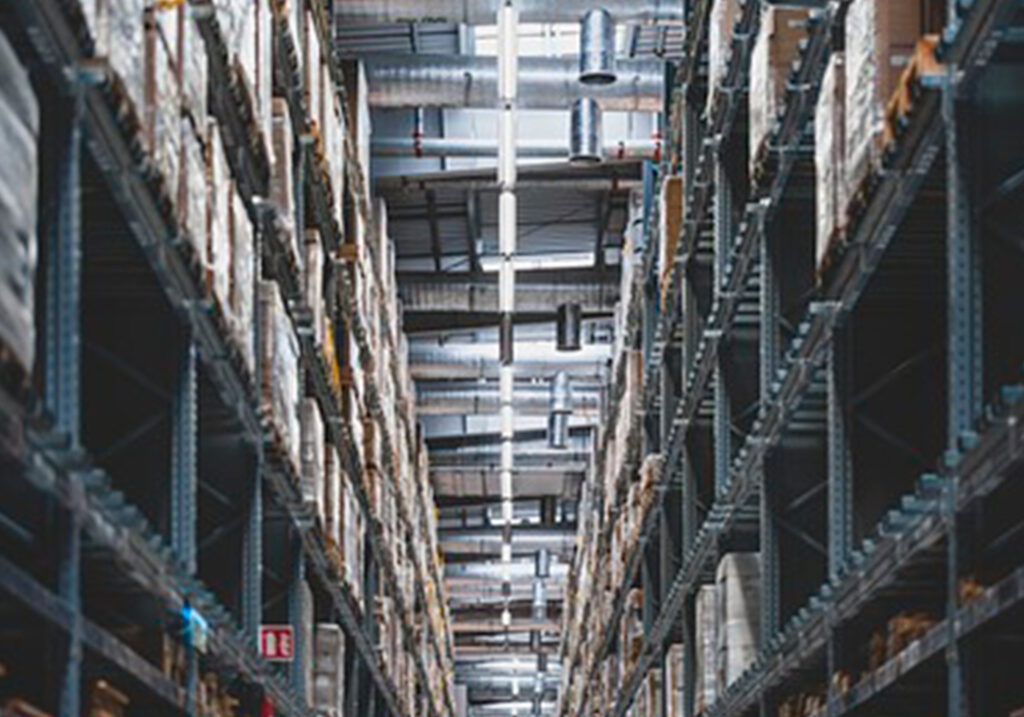Warehouses are an important part of the national economy, as they house several important materials and provide operational space for businesses of all kinds.
When constructing a warehouse, choosing the right building material is a crucial decision that impacts durability, cost, efficiency, and sustainability.
Steel has long been a popular choice for warehouse construction due to its strength, versatility, and cost-effectiveness. However, other materials, such as concrete, wood, and hybrid structures, also offer benefits.
This article explores the advantages and disadvantages of steel and compares it to alternative materials to determine whether steel is the best choice for warehouse construction.
Strength and Durability
Steel is widely regarded as one of the most durable construction materials, making it an ideal choice for warehouses. Its high tensile strength allows it to withstand significant weight loads, making it suitable for storing heavy machinery, industrial equipment, and bulk inventory. Unlike materials such as wood, which can deteriorate over time due to moisture and pests, steel remains resistant to rot, termites, and mold. This resistance ensures that steel warehouses maintain their structural integrity for decades, even in harsh environmental conditions. Additionally, steel structures can endure extreme weather events, including heavy snow, strong winds, and seismic activity, making them a reliable option for businesses operating in areas prone to natural disasters.
Another key benefit of steel is its fire resistance. Unlike wood-framed warehouses, which are vulnerable to fire hazards, steel does not combust or contribute to the spread of flames. This feature significantly enhances the safety of the warehouse, protecting both inventory and personnel from potential fire-related risks. Furthermore, insurance companies often offer lower premiums for steel buildings due to their fire-resistant properties, resulting in long-term financial benefits for warehouse owners.
In addition to strength, steel offers flexibility, which is crucial for withstanding external pressures. Unlike concrete, which may develop cracks over time due to environmental stressors, steel has a higher resistance to expansion and contraction. This characteristic makes steel structures more adaptable to changing temperatures and shifting loads, reducing the likelihood of structural failures. With proper protective coatings, such as galvanization or powder coatings, steel warehouses can maintain their durability for decades, requiring only minimal maintenance.
Cost-Effectiveness
Steel warehouses are often more cost-effective than structures made from other materials, particularly when considering construction efficiency and long-term maintenance. The prefabrication of steel components reduces construction time and labor costs, making steel structures more affordable to build. Unlike traditional materials such as brick or concrete, which require extensive on-site labor, steel buildings are designed for efficient assembly. The reduced need for skilled labor not only lowers immediate construction costs but also helps businesses achieve faster project completion, minimizing downtime.
Additionally, steel’s lightweight nature reduces foundation expenses. Because steel is lighter than concrete, the foundation does not need to be as thick or as deep, leading to cost savings in excavation and material costs. In contrast, warehouses made of concrete require a robust foundation, which increases both material and labor expenses. These savings make steel an attractive option for businesses looking to maximize their budget while still investing in a long-lasting and structurally sound warehouse.
However, it’s important to note that steel prices can fluctuate due to market demand, supply chain disruptions, and raw material costs. While the initial construction costs of a steel warehouse may be lower than those of reinforced concrete, fluctuations in steel pricing can affect budgeting. Despite these potential variations, steel’s long lifespan, durability, and low maintenance requirements help offset these financial uncertainties, making it a smart long-term investment.
Construction Speed and Efficiency
One of the most significant advantages of steel in warehouse construction is its speed and efficiency. Steel buildings are often prefabricated, meaning that components are manufactured off-site and then transported for assembly. This prefabrication process significantly reduces construction time compared to traditional methods, allowing businesses to complete projects faster and start operations sooner. The faster assembly also results in lower labor costs since fewer workers and fewer workdays are required to erect the structure.
Another key factor contributing to efficiency is the precision engineering of steel components. Because steel structures are designed using advanced manufacturing processes, there is minimal room for error during construction. Each piece fits together seamlessly, reducing the likelihood of on-site modifications or delays. In contrast, traditional building materials like concrete require extensive on-site work, including curing times that can prolong project timelines. Steel eliminates these delays, streamlining the construction process from start to finish.
Beyond time savings, steel buildings also contribute to sustainability by reducing material waste. Since prefabricated steel components are cut and assembled according to precise specifications, there is minimal excess material left over. Additionally, steel is one of the most recyclable construction materials, further enhancing its environmental benefits. Companies looking for a quick, efficient, and sustainable warehouse solution often turn to steel as their material of choice.
Design Flexibility
Steel offers remarkable design flexibility, making it an excellent choice for warehouses that require customized layouts. Whether a business needs a simple open-floor warehouse for storage or a multi-level facility with office spaces, steel structures can be tailored to meet specific requirements. The adaptability of steel allows for modifications such as additional mezzanine floors, overhead cranes, or specialized shelving systems, which can optimize warehouse functionality based on operational needs.
Compared to traditional building materials, steel allows for wider spans without the need for excessive internal support columns. This feature maximizes usable space within the warehouse, improving workflow and storage capacity. Businesses that rely on large open areas, such as logistics companies or manufacturers, benefit from this design flexibility, as it enables them to configure the warehouse layout to accommodate machinery, conveyor belts, or large inventories with ease.
Furthermore, steel structures are designed to be easily expandable. If a business needs to increase its storage space in the future, steel buildings can be modified by adding extensions or additional sections. This scalability ensures that warehouses can evolve with the company’s growth, eliminating the need for costly relocations or complete rebuilds. Steel’s adaptability makes it a future-proof investment for businesses looking to expand over time.
Environmental Sustainability
Sustainability is an essential factor in modern construction. Steel is a highly recyclable material, making it an environmentally friendly choice. Many steel warehouses incorporate recycled steel, reducing the demand for raw materials and minimizing environmental impact.
Additionally, steel structures are energy-efficient. Advanced insulation options and reflective coatings can improve temperature regulation, reducing heating and cooling costs. This energy efficiency helps businesses lower their carbon footprint and operational expenses.
Maintenance and Longevity
Steel warehouses require minimal maintenance compared to wood or concrete structures. Unlike wood, which may need frequent repairs due to rot or pests, steel only requires periodic inspections for corrosion or structural integrity. Galvanized or coated steel further enhances resistance to rust and degradation, ensuring long-term performance.
Concrete, while durable, can develop cracks over time, requiring repairs and maintenance. Steel’s flexibility and resilience reduce the likelihood of structural damage, resulting in lower long-term maintenance costs.
Fire Resistance and Safety
Safety is a priority in warehouse construction. Steel’s fire-resistant properties make it a superior choice compared to wood, which is highly combustible. Although extreme heat can weaken steel, fire-resistant coatings can enhance its performance in high-temperature conditions.
Concrete also offers excellent fire resistance, but steel provides additional benefits such as quicker assembly, lower weight, and design versatility. In high-risk environments, integrating fireproof coatings and sprinkler systems ensures optimal safety for steel warehouses.
Steel vs. Concrete Warehouses
Concrete warehouses are another popular choice due to their durability and fire resistance. However, they come with several drawbacks, such as higher initial costs, longer construction times, and increased foundation requirements. Unlike steel, concrete structures lack flexibility, making future modifications or expansions more challenging.
While concrete offers superior thermal mass properties, steel’s adaptability and cost-efficiency often make it the preferred choice for warehouse construction. Steel structures can incorporate advanced insulation materials to enhance energy efficiency, making them competitive with concrete in terms of temperature regulation.
Steel vs. Wooden Warehouses
Wooden warehouses are less common due to their susceptibility to pests, moisture, and fire. While wood may be more affordable in some cases, its maintenance and repair costs can be significant over time. Additionally, wood lacks the strength and longevity of steel, making it a less viable option for large-scale warehouses.
However, in certain cases, hybrid wood-steel structures can be used to combine the aesthetic appeal of wood with the structural benefits of steel. These hybrid solutions can be suitable for specific industries or smaller warehouse operations.
Steel vs. Brick or Masonry Warehouses
Brick and masonry warehouses offer a traditional appearance and excellent durability. However, they are costly and require longer construction times. Unlike steel, which provides large open spaces without support columns, masonry structures may have design limitations.
Additionally, brick warehouses require ongoing maintenance, such as repointing mortar joints and repairing weather-related damage. Steel’s low maintenance requirements and ease of expansion make it a more practical choice for modern warehouses.
Conclusion
Steel remains one of the best materials for warehouse construction due to its strength, cost-effectiveness, speed of construction, and environmental benefits. While alternative materials like concrete, wood, and brick have their advantages, steel offers the best combination of durability, flexibility, and efficiency.
For businesses seeking a reliable, low-maintenance, and adaptable warehouse solution, steel is often the optimal choice. By incorporating proper insulation, fire protection, and energy-efficient designs, steel warehouses can meet modern demands while providing long-term value. Whether for logistics, manufacturing, or storage, steel continues to be the preferred material for warehouse construction.

